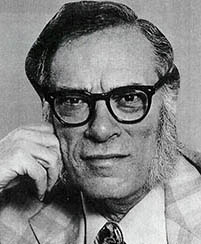
무무한한 장래에 인류는 계속 에너지를 필요로하게 될 것이며, 소련의 과학자들은 이를 염두에 두면서 계획을 수립하고 있다. 그들은 현재 지구로 전기를 보낼 거대한 태양력 발전소를 우주공간에 설치하려는 계획을 진행시키고 있다. 비록 이 계획이 군사적으로 이용될 잠재성을 지닌다 하더라도 세계평화를 증진시킬 수 있는 다국간 협력에 매우 휼륭한 기회를 제공해준다.
태양은 확실한 에너지원 중 하나이며, 앞으로 수십억년간은 지속될 것이다. 지구에 도달한 태양광은 전기로 변환시킬 수 있다. 그러나 태양광의 일부는 대기중에 흡수되고 그 나머지는 산란되며, 더우기 먼지로 인해 광도가 약해지고 구름은 빛의 투과를 더욱 차단한다. 게다가 매일 밤은 빛을 완전히 없애 버린다.
그렇다면 왜 에너지가 있는 곳으로 나가지 않는가? 왜 우주공간으로 찾아나가지 않는가? 대기권을 넘어서면 태양광은 안정된 광도로 방사되며, 구름, 먼지나 광도를 낮추는 어떠한 공기도 존재하지 않는다.
지구 적도상의 높은 상공에서 태양광을 흡수하여 이를 전기로 변환시킬 수 있는 장치를 가정해 보자. 이 장치는 춘·추분을 전후한 몇 시간 동안만 지구의 그림자에 가리울 뿐, 그외에는 강렬한 태양광에 계속해서 노출될 것이다. 이런 장치는 지구 표면상에 있는 동일한 장치보다 60여배까지 태양광을 에너지로 변화시킬 것으로 추정된다.
만일 그러한 장치가 지구적도에서 2만2천3백마일(약 3만5천7백km) 상공에 있다면, 그것은 지구궤도를 정확히 24시간만에 선회할 것이다. 그 바로 아래 적도상의 한 지점에서 볼 경우, 그것은 우주공간에 정지한 채 머무는 것으로 보일 것이다. 이 장치는 태양광을 모으며, 그것을 전기로 변환시킨다. 이는 다시 마이크로웨이브로 바뀌어진다. 이 마이크로웨이브는 지구상의 수신국으로 보내지며 다시 필요한 곳으로 배전될 수 있도록 전기로 바뀌어 진다.
그러나 그런 장치가 상당량의 에너지를 얻기 위해서는 많은 태양광을 모아야 한다. 그것은 광대한 면적에 걸쳐 '태양전지'(태양광을 전기로 변환시키는 장치)를 설치해야 한다는 것을 의미한다. 전체 장치는 '맨하탄'섬과 같거나 그 이상의 면적을 차지하리라는 것이 통상적인 추정이다. 더구나 거의 60여개의 그런 장치가 적도상공 궤도에 위치해야 할 것인데, 총면적은 '로드 아일랜드'주보다 넓을 것이다.
이 장치가 가동된다면 매년, 매세기마다 계속하여 생성될 에너지의 양은 원자력발전소 6백개의 발전량과 맞먹게 될지 모른다. 또 시간이 지나면서 장치의 효율이 향상됨에 따라 얻어지는 에너지의 양도 분명 훨씬 늘어날 것이다.
물론 그렇게 되려면 어려움도 무척 많다. 필요한 장치를 만드는 데에만 50년간의 집중적인 작업기간과 줄잡아 3조달러에 달하는 비용이 소요된다. 일단 축조된 후에도 우주공간에 있는 태양력발전소를 지속적으로 유지관리 및 수리하여야 할 것이다. 우주에 있는 장치는 기상변화나 야생동물의 습격 그리고 사람들의 파괴행위로부터는 안전하겠지만, 우주에 떠다니는 잡물질에 의해 손상받기는 쉬울것이다. 이것중 몇몇 경우는 우주가 먼지나 운석파편 입자로 꽉 차 있기 때문에 자연 재해라고 하겠다. 그러나 어떤 것들은 위성, 로케트 파편과 조각같은 인공적인 것이 될 것이다.
그다음 역시, 태양장치에서 지구표면에 이는 마이크로웨이브빔이 오존층과 대기, 인간과 야생생물 등에 어떤 영향을 미칠지에 관한 의문도 제기되고 있다.
이 계획은 1960년대 '매사추세츠'주 '케임브리지'에 있는 '아더 디 리틀' 회사의 '피터 이글레이저'에 의해 진척되었고, 1970년대에는 NASA가 그 가능성을 검토하였다. 그러나 비용과 환경적인 고려가 미국의 관심에 찬물을 끼얹은 것으로 보인다.
그렇지만 소련인들은 이제 그 아이디어에 착안했다. 그들은 미국의 가장 우수한 로킷보다 최소한 4배이상 강력한 '에네르기아'라는 로킷을 보유하고 있으며, 이것을 이 원대한 계획의 수행에 필요한 자재를 우주로 수송하는 데 활용하고자 하고 있다.
그들이 수동식 태양광 반사기를 건조한다든가 하는 간단한 것에서부터 출발할것같다.
이것은 도시를 밝게 하거나 때아닌 서리가 내릴 경우 경작지역을 따뜻하게 할 수 있는 소규모 '달'을 하늘에 만드는 셈이다. 이 사업은 1990년까지는 실험적으로 수행될 것 같다.
이런 주목할만한 계획에서 만일 소련이 진전을 이룩한다면, 미국은 당연히 태양력과 우주에 있는 반사경의 군사적 응용가능성에 대해 위협을 느낄 것이다. 나는 그런한 가능성에 대처하는 가장 확실한 방법은, 그러한 거대 우주계획을 국제화하는 것이라고 항상 느껴왔다. 그런 방법은 세계적인 노력 아니고는 언제나 너무 값비싸기 마련이다.
그 밖에도 이러한 우주내 태양에너지 발전소의 평화적 이용은 한 나라에만 국한되어서는 안된다. 태양광이 지구전체의 것이라고 생각하는것은 이치에 맞는다. 이 에너지를 활용하고 발전소를 유지관리, 개선하고자 하는 공통의 바램으로 세계 각국은 서로 도울수 있는 중대한 사업을 갖게 되는 것이며 현재보다 강한 공동의 목표의식을 갖게 될 것임에 틀림없다.
그리고 어떠한 심각한 불일치나 논쟁도 순조로운 발전소 가동에 역작용을 가하게 되어 전체를 위한 에너지 공급을 감소기키게 되므로, 그것은 평화를 향한 강력한 유인이 될 것이다.
We're going to need energy for the indefinite future and Soviet scientists are making plans with this in mind. They are now proceeding with a project to place huge solar power stations in space that would beam electricity to Earth. Although the project has potential military application, it also offers an excellent opportunity for multinational cperation that could enhance world peace.
The sun is an obvious energy source, one that will last for billions of years. Sunlight reaching the Earth can be converted into electricity, but the atmosphere absorbs some of the light and scatters the rest, dust dims it further, clouds block it still further, and night ends it altogether for part of each day.
So, why not go where the energy is? Why not move out into space? Beyond the atmosphere, the light of the sun shines in steady splendor, with no clouds, dust or air of any kind to diminish it.
Suppose we imagine a device that is far above Earth's Equator, one that is capable of absorbing sunlight and turning it into electricity. It would move into Earth's shadow for an occasional few hours about the time of each equinox. Except for that, the device would be exposed to full sunlight continuously. It is estimated that such a device would convert up to 60 times as much sunight into energy as the same device could on the surface of the Earth.
If such a device is 22,300 miles above Earth's Equator, it will orbit the Earth in just 24 hours. Viewed from a spot on the Equator directly under it, it will seem to remain stationary in space. The device can collect sunlight, convert it into electricity, which can be beamed down to a receiving station on Earth that could again convert it to electricity for distribution where needed.
To get a reasonable quantity of energy, however, such a device would have to pick up a great deal of sunlight. That means spreading out "solar cells"(units that convert sunlight to electricity) over a vast area. The usual estimate is that the total device will have an area equal to that of Manhattan Island and or more. What's more, there would be perhaps 60 such devices placed in orbit above Equator-taking up a total area greater than that of the state of Rhode Island.
The amount of energy thus made available continuously, year after year, century after century, might be equal to the output of 600 nuclear power plants. With time, the quantity of energy obtained would surely be further increased as the efficiency of the devices is enhanced.
There are enormous difficulties in the way, of course. It could easily take 50 years of concentrated work and cost up to $3 trillion to build the necessary devices. Once built, the solar power stations in space would have to be continually maintained and repaired. In space, the devices would be safe from weather, depredations of wildlife and human vandalism, but would be vulnerable to damage from space junk. Some of this would be natural, since space is fairly full of particles of dust and gravel. Some would be human-made, bits and pieces of satellites and probes.
Then, too, there is a question as to how the microwave beams stretching from solar devices down to Earth's surface might affect the ozone layer, the atmosphere, people, wildlife and so on.
The project had been advanced by Peter E. Glaser of Arthur D. Little Inc. in Cambridge, Mass., in the 1960s and NASA had considered the possibility in the 1970s. However, cost and environmental considerations seemed to kill American interest.
Now, however, the Soviets have picked up the idea. They have a new rocket, "Energia," which is at least four times as powerful as the best American efforts, and they hope to use it to lift into space the quantities of material that would be required for such an enormous project.
They might well start with something simple, building a passive reflector of sunlight. This would create a small "moon" in the sky that could light up cities or warm farming areas in case of unseasonable frosts. This might be done, in an experimental way, by the 1990s.
If the Soviets make progress in this notable plan, the United Stated might well fear possible military applications of solar power and reflectors in space. I have always felt that the surest way of countering such a possibility is to internationalize such huge space projects that may, in any case, be too expensive for anything less than a global effort.
Besides, the peaceful uses of such solar energy power stations in space should not be confined to a single nation. It makes sense to suppose that sunlight belongs to all of Earth. The common desire to make use of this energy and to maintain and improve the stations should give the nations of the world a vital project to rally round and impose a greater feeling of common purpose than now exists.
And since any serious disagreements or controversies might adversely affect the smooth workings of the stations, cutting down the energy supply for all, that would be a strong incentive toward peace.

















